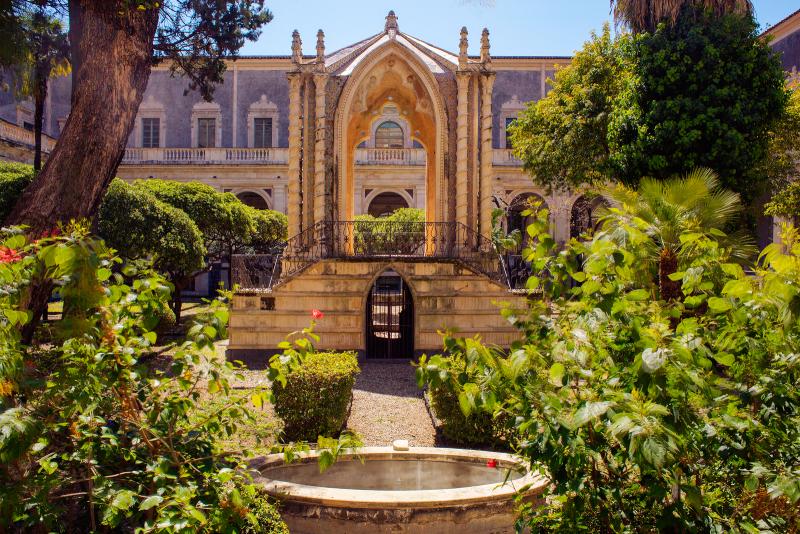If the nuns of Catania’s Benedictine Convent devoted all their time to praying, the monks of the adjacent Benedictine Monastery were said to be a bit more lax about their spiritual duties. In southern Italian author Federico De Roberto’s most famous novel, I Viceré, which is very accurate in describing the social and political background of Catania in the years that followed Italy’s unification, the monks are described as carrying out the “art of Michelasso,” an Italian saying used to describe someone who, well, is idle, avoids hard work and responsibilities.
Their monastery, known as Monastero di San Nicolò l’Arena, resembled a sumptuous noble residence rather than a place where to retreat and pray to God. It was also very big, almost a city within a city, located in a panoramic position with views of the sea and the Etna volcano on what was once the acropolis of the Greek colony of Katane.
The Benedictine Monastery’s wealth was an indicator of the power the religious order had acquired, in Catania and beyond. This is still clear when you visit the complex, a maze of rooms, basements, stairs, courtyards, colonnades and very long hallways, where architectural styles from different eras superimpose on one another. (Because the complex is big and the points of interest many, we recommend taking the guided tour which departs every hour and will give you a good overview of the history and main sites within the monastery, which today houses the Department of Humanities of the University of Catania – you may even happen upon the graduating students sportting with pride the traditional laurel wreaths on their heads).
The first Benedictine monastery was in nearby Nicolosi, in the contrada San Nicolo l’Arena (hence the name the complex has preserved till today), at the foot of the Etna. In the mid-16th century, the monks asked for permission to build a new monastery within the walls, to escape the threats posed by the eruptions of Etna and by possible brigands’ attacks.
So they moved in 1588, but, ironically, the monastery was destroyed by the devastating 1669 eruption of Mount Etna, and again by the earthquake that hit South-Eastern sicily in 1693, erasing most towns in the area. They were subsequently rebuilt, like the monastery itself, in that style of Baroque that is uniquely Sicilian and that earned eight cities including Catania the Unesco’s World Heritage designation.
The current monastery dates from the 18th century. The reconstruction was mostly carried out by sarchitect Giovan Battista Vaccarini, whose inspiration were Baroque greats Bernini and Borromini, who both worked in Rome.
The Western cloister, which had been destroyed, was rebuilt; an eastern cloister was added with the addition of a neo-gothic Caffeau, a sort of small temple where the monks gathered for tea or coffee (we told you the enjoyed the good life); a library, kitchens, refectories and warehouses, some spaces dug into the lava that had flowed into town during the destructive volcano’s eruption, perfumed gardens, a botanical garden, and the Church of San Nicolò, which the monks envisioned as comparable to St. Peter’s. And impressive it is, one of the largest basilicas in all of Sicily; but it remains incomplete in the façade.








